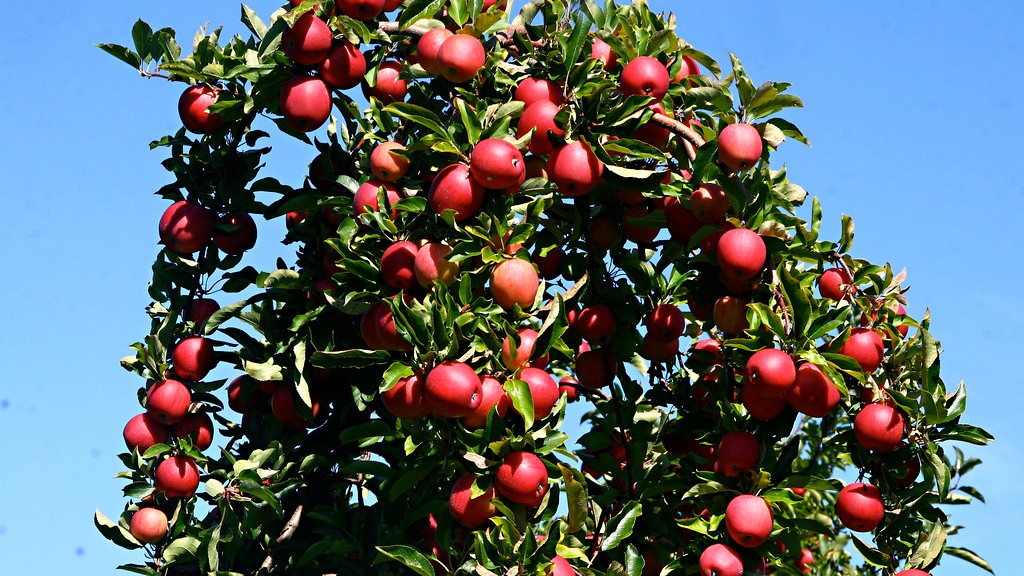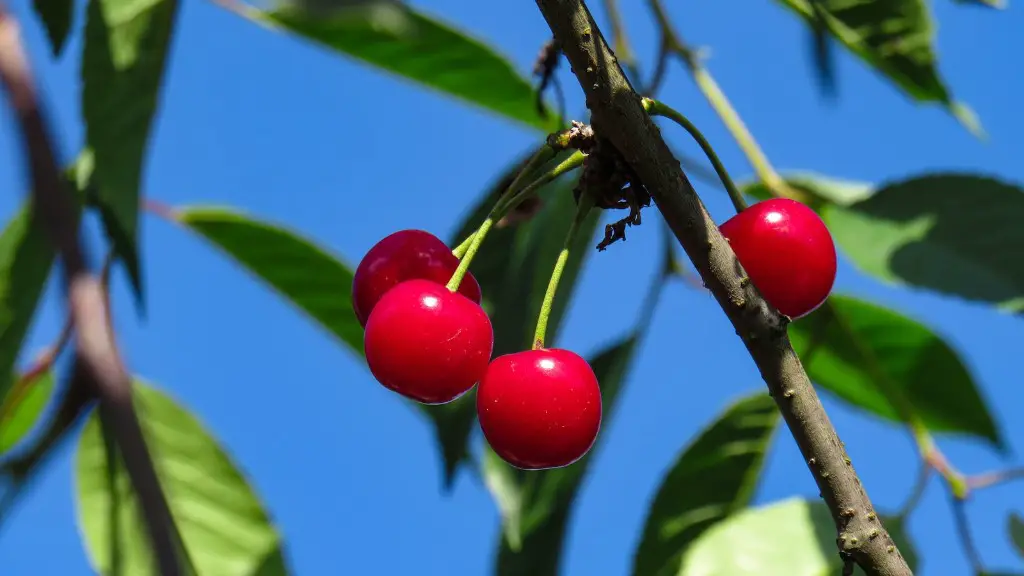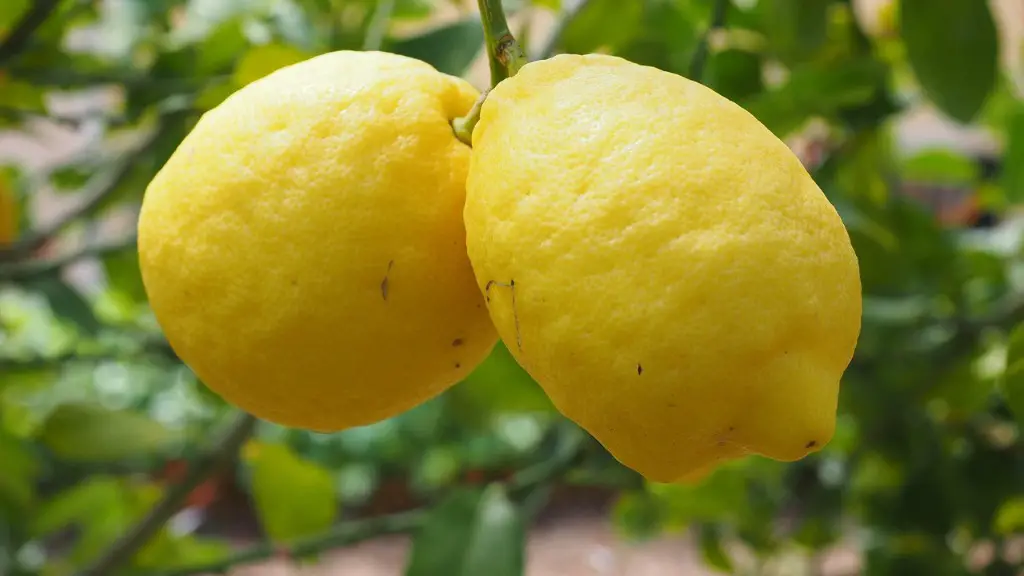A lemon tree can grow to a fairly sizable size. Depending on the variety, a lemon tree can grow between 10 and 20 feet tall and may reach a width of 8 to 10 feet across. Aside from their size, lemon trees are also renowned for their lush foliage, long green leaves and fragrant flowers. With proper care, a lemon tree can remain healthy and productive for over 50 years with the right conditions.
Regular pruning is important to keep the shape and size of a lemon tree in check, while also allowing ample light and air circulation. Regular fertilizing and watering is also important to provide the right nutrients for the tree and the fruit it produces. However, the amount of fertilizer required for a lemon tree will depend on the variety being grown and the age of the tree.
When selecting a lemon tree, it is important to choose a variety that is suitable for the climate in which it is being planted. Some varieties may require more maintenance, such as extra pruning, while others may have slightly higher water needs. It is also important to consider the soil in which the tree will be planted; good drainage and slightly acidic soil is preferred for most lemon trees.
Overall, a lemon tree is an easy to grow fruit and should provide delicious fresh lemons for decades with proper care and select variety. With the right environmental conditions, a lemon tree can grow to a sizeable height, giving a home orchard some shade and a pleasant citrus scent.
Factors Affecting Lemon Tree Growth
Aside from the variety being grown, there are many factors that can affect the size of a lemon tree. Appropriate pruning, regular fertilizing and watering, and choosing the proper location for the tree are all important. Another factor to consider is the overall health of the tree; a healthy lemon tree will be more likely to reach its potential size.
The environment in which the lemon tree is grown is also important; temperatures that are too hot or cold can affect the tree’s growth and fruit production. Additionally, the soil pH can have an effect, as some varieties will not do well in overly acidic or alkaline soils. Good drainage is also important to encourage healthy root growth and discourage fungal problems.
Light is another important component of lemon tree growth. Too much shade may limit the size of the tree and reduce fruit production while too much sun can increase water needs. It is also important to choose a location that is protected from strong winds, which can damage the foliage and break branches.
Finally, regular pruning is important for controlling lemon tree size and for managing shape. Before pruning, make sure to familiarize yourself with the growth habits of the particular variety being grown to ensure that the pruning is done correctly as this will affect the tree’s overall size and health.
Pest Management
In order to maintain the health and size of a lemon tree, it is important to watch for pests such as aphids, scale insects, and mites. Regular inspection of the tree and its foliage can help identify infestations early, while good air circulation can help prevent their spread. Additionally, the removal of dead leaves and branches can help reduce pockets of humidity, discouraging mold and mildew growth.
If an infestation is identified, it is important to take the appropriate action as soon as possible. This can include the application of insecticidal soap or horticultural oil to suffocate pests, as well as the use of other products such as neem oil for controlling aphids. Additionally, the use of beneficial insects such as ladybugs and lacewings can be a natural way to keep pests in check.
It is also important to note that the use of chemical pesticides should only be done as a last resort as they can have adverse effects on the environment and can be toxic to humans and wildlife. When in doubt, seek help from a local nursery or gardening expert.
Harvesting Lemons
Depending on the variety, a lemon tree can begin producing fruit as early as six months after planting. Most lemon tree varieties will begin to produce fruit in the form of flowers during the early spring months. Depending on the climate, these flowers can then develop into mature lemons which can be ready for harvest between 8 to 10 months later.
When it comes to harvesting your lemons, it is important to do so when the fruit is at its peak. As the fruit begins to mature and ripen, the juice will become sweeter and more sour. It is best to harvest your lemons when they are still a bit firm, as the full flavor will not develop until after they are picked. Additionally, lemons can be picked before they are fully ripe and left to ripen at room temperature while they are out of the tree.
Lemons can be left on the tree longer, though this could lead to an increased risk of mold developing due to humidity. It can also result in sun scald due to exposure to too much direct sunlight, so it is best to check the tree regularly and harvest when necessary.
Producing Seedlings
If you’d like to produce new lemon trees, the process is fairly straightforward. Lemon trees are grown from seedlings, though some varieties can be grafted onto existing rootstock to produce trees with certain traits. When growing from seed, it is important to select a variety that does well in the climate you live in, as this will affect the tree’s size and health in the long run.
When selecting the right seedlings, look for healthy looking fruits that have a relatively smooth skin and a deep yellow color. After selecting the right seed, the next step is to clean and remove the flesh from the seed, which is best done with a Knife and some patience. After the seeding has been removed, place it in a damp paper towel and place it in a warm and dark environment to ensure germination.
Once the seeds have sprouted, you can then transfer them to small pots and place them in the sun for about 5 hours each day. Once the seedlings have grown a few inches, you can then transplant them in the desired location in your garden. Make sure to keep the soil moist and provide enough water for the tree to develop a strong root system.
Mulching Lemon Trees
Mulching can help conserve water and encourage healthy root growth of a lemon tree while also helping to control soil temperature. When mulching around a lemon tree, look for materials such as wood chips, bark, or straw. Make sure to leave some space between the mulch and the trunk of the tree to keep the tree from being overtaken by the mulch.
When it comes to fertilization, lemon trees can benefit from the use of organic fertilizers. A general-purpose fertilizer should be applied in the early spring months and then again mid-summer to provide the necessary nutrients for a healthy growth. Additionally, it is important to water the tree regularly and evenly to make sure the soil remains moist and the roots can get the water they need.
A healthy lemon tree should bring years of enjoyment and delicious fruit. With the right care, your lemon tree will continue to produce beautiful foliage and sweet and sour lemons for years to come. Just be sure to keep an eye out for pests, provide the needed nutrients and water, and remember to prune regularly.




